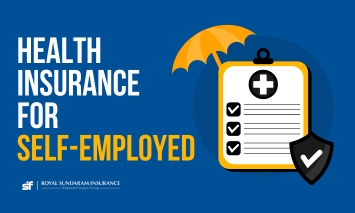Health Insurance Marketplace
Apr 08, 2025 • 3 Min Read
Types of Health Insurance Plans
The marketplace health insurance plans cater to different needs and budgets. Here's a breakdown of the common plan types you'll encounter:
Metal Tiers: A Guide to Coverage Levels
Marketplace plans are categorised by metal tiers (bronze, silver, gold, and platinum), which represent the general level of coverage they provide. This translates to a trade-off between your monthly premiums (the cost you pay to maintain the plan) and your out-of-pocket costs (deductibles, coinsurance, copays) when you require healthcare services.
- Bronze Plans: Designed for those on a tight budget, bronze plans offer lower monthly premiums but have higher deductibles and out-of-pocket costs. They're a good fit for young, healthy individuals who rarely anticipate needing extensive medical care.
- Silver Plans: A middle-ground option, silver plans offer a balance between premiums and out-of-pocket costs. The marketplace often provides subsidies to help with premiums for these plans, making them a popular choice for many.
- Gold Plans: These plans offer more comprehensive coverage with lower deductibles and out-of-pocket costs compared to bronze and silver plans. They come with higher monthly premiums but provide greater financial protection in case of unexpected medical needs.
- Platinum Plans: Offering the most extensive coverage, platinum plans have the highest monthly premiums but the lowest out-of-pocket costs. These plans are ideal for individuals with chronic health conditions or those who anticipate needing frequent medical care.
Network Variations: Understanding HMOs, PPOs, and More
Beyond metal tiers in marketplace health insurance plans, you'll also encounter different network options within each plan. These networks refer to the group of doctors, hospitals, and other healthcare providers that the insurance company has contracted with. Here's a quick explanation of the most common network types:
- HMO (Health Maintenance Organization): HMO plans typically require you to choose a primary care physician (PCP) who coordinates your care and provides referrals to specialists within the HMO network. Out-of-network coverage is usually limited.
- PPO (Preferred Provider Organization): PPO plans offer more flexibility in choosing providers. You can visit any doctor or hospital, in-network or out-of-network, but in-network care typically comes with lower costs.
- POS (Point-of-Service): POS plans often combine features of HMOs and PPOs. You may have a lower copay for using in-network providers but still have some coverage for out-of-network care.
The marketplace may also offer catastrophic health plans for young adults who meet certain criteria. These plans are designed to cover major accidents or illnesses but typically don't provide coverage for preventive care or routine medical services. The best plan for you depends on your individual circumstances, health needs, and budget.
The marketplace can be a valuable tool to compare plans, understand coverage details, and find the option that best fits your situation. Feel free to utilise the resources and support offered by the marketplace to make an informed decision about your health insurance coverage.
How to Use the Marketplace?
Here's a step-by-step approach to using the marketplace for finding and enrolling in a medical insurance plan:
- The first step is to determine your eligibility.
- Keep these documents handy for a smooth registration process:
- Proof of Identity: Aadhaar Card, PAN Card, etc.
- Address Proof: Voter ID card, utility bills, etc.
- Income Proof (if applicable): Salary slips, income tax returns, etc. (needed for subsidy calculations)
- The marketplace offers a user-friendly interface to browse plans from various insurance companies. You can filter them based on your needs, such as: insurance type, coverage details, company reputation, and monthly premiums.
- Depending on your annual income and family size, you might be eligible for government subsidies that significantly reduce your premium costs.
- Once you've chosen a plan, the marketplace facilitates easy enrollment.
Note: If you are looking for a marketplace dental insurance plan, look out for health insurance plans that may include limited dental coverage as an add-on or for specific procedures. Be sure to carefully review the plan details to understand the extent of dental coverage offered (if any).
Understanding Subsidies and Assistance on the Health Insurance Marketplace
The Indian government recognises the importance of marketplace medical insurance. To ease the financial burden of health insurance premiums, the marketplace offers subsidies to eligible individuals and families. Here's a closer look at these lifelines:
Pradhan Mantri Jan Arogya Yojana (PMJAY)
PMJAY, also known as Ayushman Bharat, is a central government scheme that provides health insurance coverage of up to ₹5 lakh per year for secondary and tertiary care hospitalisation. This scheme is primarily targeted towards:
- Families living below the poverty line (BPL) as identified in the Socio-Economic Caste Census (SECC) data.
- Families above the poverty line who are willing to pay a nominal annual premium (around ₹300).
Eligibility for Subsidies
Your annual income and family size determine the eligibility criteria for marketplace subsidies. Here's a general outline:
- Lower Income Families
- Middle Income Families
Some states may offer additional health insurance subsidies or schemes alongside the central government initiatives. Be sure to explore any state-specific programs that might further reduce your healthcare costs.
Conclusion
The health insurance marketplace has made it easier for individuals and families to find and enrol in a suitable Royal Sundaram health insurance plan. With a range of options available, including different metal tiers and network variations, there is a plan to suit every budget and health need.
By using the marketplace, explore and compare plans based on your specific requirements and access subsidies that may be available to them. Overall, the marketplace empowers people to make informed decisions about their healthcare coverage and ensures that everyone has access to affordable and comprehensive health insurance.



Discover the perfect insurance plan for you!
Get your free quote now!
Get StartedBy Clicking on Get Started, You agree to our Terms and Conditions and override DNC/NDNC registration.
More like this
View more





